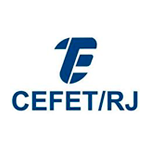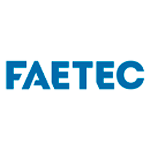Relação de Variáveis com o Desempenho de Estudantes na Educação Profissional a Distância
DOI:
https://doi.org/10.18264/eadf.v12i2.1773Resumo
Esta pesquisa tem como objetivo analisar a relação da interação, interatividade, atribuições, qualidade de vida do estudante e atribuições do professor com o desempenho de estudantes da EaD/IFFAR. Como metodologia de pesquisa, utilizou-se a pesquisa ação. No 1º Ciclo (Pesquisa-Ação Diagnóstico), os estudos geraram evidências de que os estudantes da EaD/IFFAR se caracterizam como um público adulto, a maioria constituída pelo gênero feminino, estudantes masculinos possuem uma média de alfabetização digital superior, enquanto estudantes femininos possuem um desempenho melhor. No 2º Ciclo (Intervenção Disciplina), observou-se que na disciplina que recebeu o processo de intervenção, os estudantes apresentaram os maiores índices de interação e desempenho. E, finalizando o 3º Ciclo (Definição do Modelo Estrutural), confirmou-se o objetivo de pesquisa ao qual relaciona as Atribuições do Estudante com o seu desempenho escolar. Além de possuir uma relação direta e positiva, registrou os maiores índices de coeficiente de explicação (R²), contendo o índice mais alto do modelo, sendo classificado como moderado e significante. Destaca-se ainda que, a relação entre a variável Atribuição do Estudante e Desempenho, foi a que registrou o maior efeito da pesquisa, sendo também classificada com um efeito moderado.
Palavras-chave: Educação profissional a distância. Moodle. Atribuições do estudante EaD. Desempenho do estudante EaD.
Downloads
Referências
BELLONI, M. L. 2003. Educação a Distância. Campinas, SP: Autores Associados.
BEZERRA, A. A. Predição de desempenho de estudantes em ambientes virtuais de aprendizagem. 2017. 74 f. Dissertação (Mestrado em Engenharia Elétrica e da Computação) - Campus de Sobral, Universidade Federal do Ceará, Sobral, 2017.
BRANDíO, J. O. da S. Uma abordagem com learning analytics e séries temporais na análise de dados educacionais. 2018. 97 f. Dissertação (Programa de Pós-Graduação em Informática Aplicada) - Universidade Federal Rural de Pernambuco, Recife.
BRASIL, MINISTÉRIO DE EDUCAÇíO. 2007. Referenciais para Elaboração de Material Didático para EaD no Ensino Profissional e Tecnológico. Secretaria de Educação Profissional e Tecnológica e Secretaria de Educação a Distância Brasília/DF.
CAEN/PROEN/IFFAR. (2015, 2016). Instituto Federal de Ciência e Tecnologia Farroupilha. Pesquisa do Perfil do Estudante do IFFAR– EaD.
COHEN, J. 1988. Statistical Power Analysis for the Behavioral Sciences. 2. ed. New York:Psychology Press.
COSTA, V. M. F. 2020. Analysis of Well-Being and Anxiety among University Students. Int. J. Environ. Res. Public Health. v. 17, n. 3874, p. 1-23.
FARRA, R. A. D; LOPES, P. T. C. 2013. Métodos mistos de pesquisa em educação: pressupostos teóricos. Revista Nuances: estudos sobre Educação, Presidente Prudente-SP, v. 24, n. 3, p. 67-80.
GARRISON, D. R., & ANDERSON, T. 2003. E-Learning in the 21st century: A framework for research and practice London: Routledge/Falmer.
Downloads
Publicado
Como Citar
Edição
Seção
Licença
Copyright (c) 2022 EaD em Foco

Este trabalho está licenciado sob uma licença Creative Commons Attribution 4.0 International License.
Todos os artigos publicados na Revista EaD em Foco recebem a licença Creative Commons - Atribuição 4.0 Internacional (CC BY 4.0). Todas as publicações subsequentes, completas ou parciais, deverão ser feitas com o reconhecimento, nas citações, da Revista EaD em Foco como a editora original do artigo.













